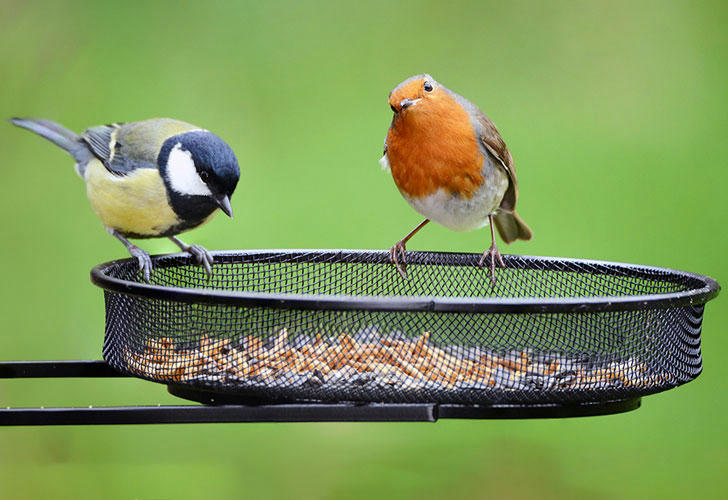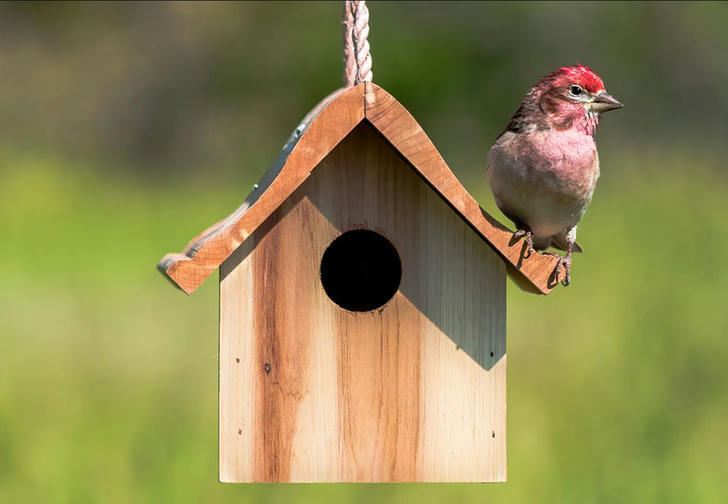How to Turn Your Garden into a Bird Paradise
Do you love the cheerful chirping of birds and dream of having a garden alive with fluttering wings? Transforming your outdoor space into a bird paradise is easier than you might think. With the right food sources, shelter options, and habitat-friendly plants, you can attract a variety of feathered friends who will bring beauty and song to your yard. In this article, we’ll explore how to create a bird-friendly environment, recommend budget-friendly products like bird feeders, birdhouses, wild bird feed, and even garden décor to make your space inviting for both you and your avian visitors.
Few things are as soothing as watching a bright red cardinal or a delicate hummingbird flutter around your garden. Birds add movement, color, and melodic songs to your outdoor space, transforming it into a peaceful retreat from the hustle and bustle of daily life.
1. Food Sources: Feeding Your Feathered Friends
One of the fastest ways to attract birds is by providing reliable food sources. Different birds have different preferences, so variety is key.

1.1 Bird Feeders
Why They Work: Bird feeders offer a steady supply of seeds, suet, or nectar, enticing birds to visit regularly.
Types of Feeders:
- Tube Feeders – Ideal for small seeds like sunflower kernels or mixed birdseed.
- Hopper Feeders – Hold a larger volume of seeds, suitable for bigger birds like cardinals or blue jays.
- Platform Feeders – Provide an open space for ground-feeding birds like sparrows and doves.
- Window Feeders – Great for up-close viewing, often attach to glass with suction cups.
1.2 Wild Bird Feed
Seed Mixes: Many wild bird feed mixes include sunflower seeds, millet, and safflower. A high-quality blend attracts a wide range of species.
Specialized Options:
- Nyjer (Thistle) Seeds – A favorite of finches.
- Peanuts – Loved by woodpeckers and blue jays.
- Suet Cakes – Offer high-energy fat for birds in colder climates.
- Nectar – Essential for hummingbirds, typically made from a simple sugar-water solution.
2. Shelter and Nesting: Providing a Safe Haven

2.1 Birdhouses
Birdhouses (or nest boxes) are crucial for cavity-nesting birds like bluebirds, chickadees, and wrens. Each species has different preferences for entrance hole size and height, so research which birds are common in your area.
Placement Tips:
- Mount birdhouses at least 5–10 feet above the ground.
- Avoid direct sunlight and harsh winds—partial shade is ideal.
- Keep them away from heavy foot traffic or predator access.
2.2 Natural Cover
While birdhouses are great for cavity-nesters, many birds prefer to build their own nests in dense shrubs or trees. Providing thick foliage offers a safe retreat from weather and predators.
- Evergreen Shrubs – Such as juniper or arborvitae, maintain foliage year-round.
- Flowering Shrubs – Like hydrangeas or lilacs, offer extra nectar for hummingbirds and pollinators.
- Vines – Climbing plants like clematis or trumpet vine can create cozy nesting spots.
3. Choosing Bird-Friendly Plants and Flowers
3.1 Native Species
Native plants are adapted to your local climate and soil conditions, making them low-maintenance and wildlife-friendly. Birds often rely on these plants for natural food and nesting materials.
- Berry-Producing Shrubs: Elderberry, holly, and serviceberry provide essential winter food.
- Seed-Bearing Flowers: Sunflowers, coneflowers, and black-eyed susans produce seeds that finches and sparrows love.
- Nectar-Rich Blooms: Bee balm, salvia, and trumpet vine attract hummingbirds.
3.2 Flower Seeds and Garden Décor
Seed Packs: Opt for a wildflower mix designed to attract birds, bees, and butterflies. These seed packs are typically under $15 and contain a variety of colorful blooms.
Garden Décor: Adding a birdbath, wind chimes, or garden sculptures can make your yard more visually appealing—to both you and your feathered visitors.
4. Creating a Bird-Friendly Water Source
Water is essential for drinking and bathing. Even a simple birdbath can significantly increase the number of avian visitors.
- Shallow Depth: Most birds prefer 1–2 inches of water.
- Rocks or Perches: Provide a stable surface for birds to stand on while drinking.
- Regular Cleaning: Change the water every few days to prevent algae or bacteria buildup.
Upgraded Option: Consider a solar-powered fountain or water wiggler to create gentle water movement, attracting more birds while deterring mosquitoes from breeding.
Conclusion
Roll up your sleeves, grab a few flower seeds, and set out a wild bird feed mix. With a bit of planning and consistent care, your garden can become a year-round haven for feathered friends—truly a bird paradise right in your own backyard.
